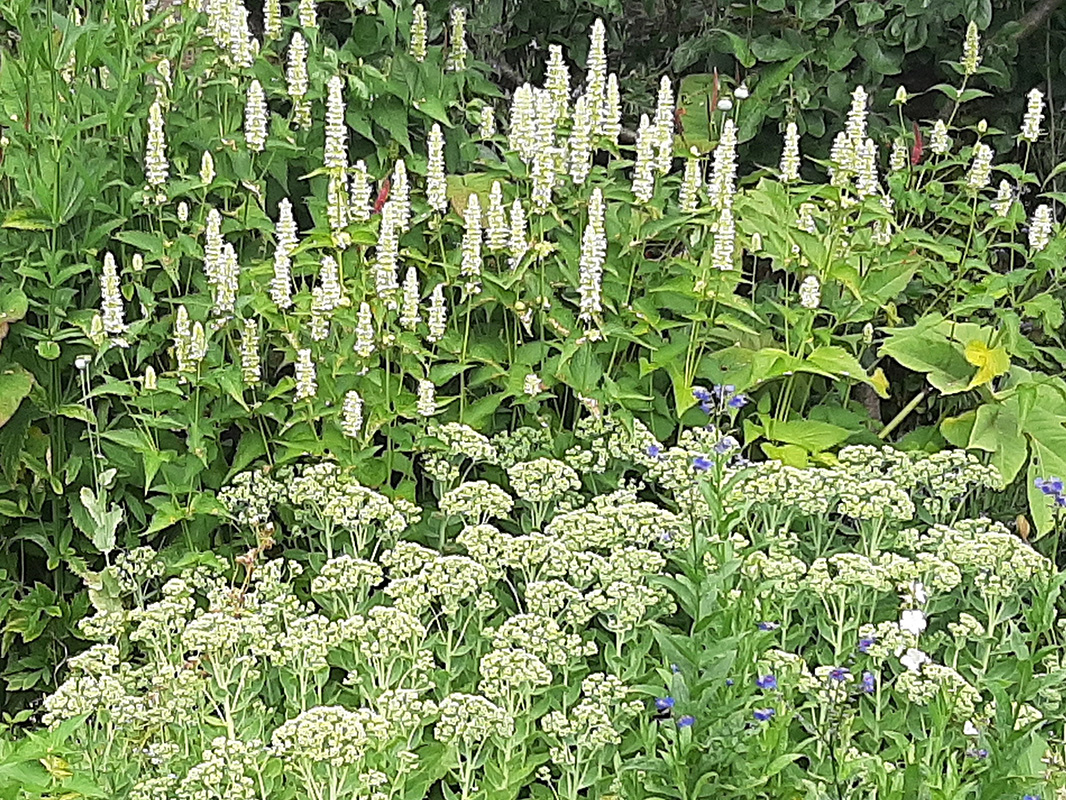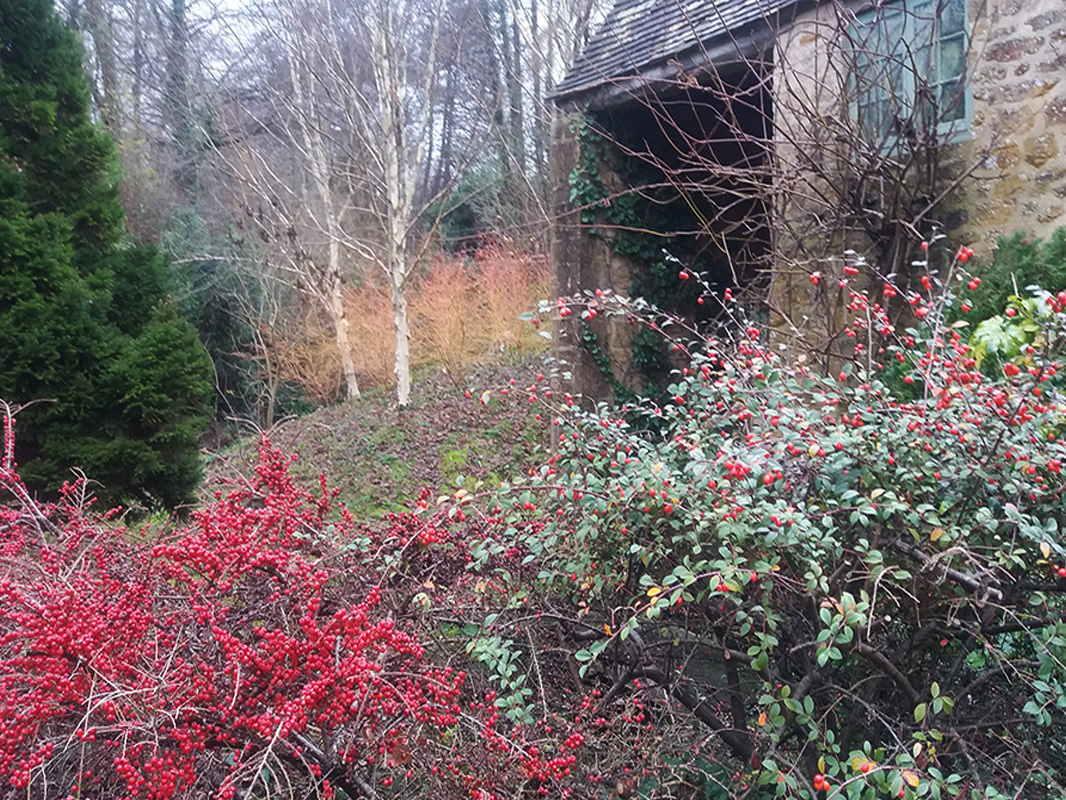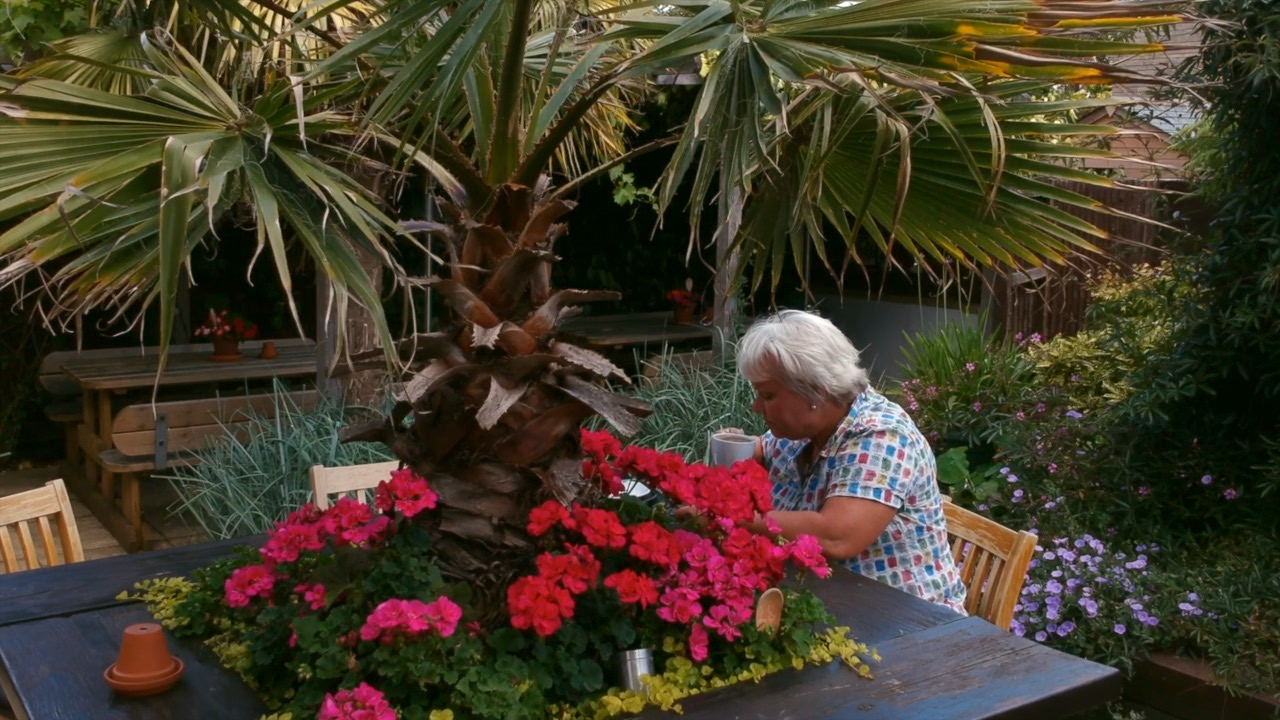One or many?
I was recently stunned by multiple Hamamelis x intermedia Jelena and Arnold Promise or witch hazel. Planted en masse in woodland at Trentham, they flower in late winter and perfume the airs on still days. This planting was designed by acclaimed plantsman and landscaper Nigel Dunnett. The Trentham Gardens are undergoing daring and extensive development (funded I know not how).
The website states
In a first of its kind in the UK, the Zig Zag woodland walk area has been planted with 400 witch-hazels alongside richly scented flowers beneath a canopy of 250-year-old beech and oak woodland creating a new ‘perfumed walk’ of highly scented winter flowering shrubs. In 2018 new planting will add hundreds of thousands of spring flowering bulbs too.
I fancy a witch hazel or two, but only if I possessed a garden big enough to indulge in large winter flowering plants that are going to look rather plain by summer. I ventured only briefly into my small garden recently to admire my snowdrops and would rather save the space I have for the main display for summer, when I will have more desire to sit out there.
A witch hazel of a decent size will cost at least £30, and so they are usually seen in solitary splendour. There is a good one at East Lambrook Manor and another in Ilton which is visible from the road. With broad vision and deep pockets, Trentham have spent thousands of pounds on one kind of plant, which has boggled my mind. Let’s say hundreds of thousands of wholesale bulbs translates as just a hundred thousand crocuses, and a relatively cheap one like Barrs Purple, that will still work out at over £3000….crikey.
They haven’t stopped at witch hazels.
700 magnolia trees have been planted to date with single species groves in “naturalistic stands” to create a wave of white, pink and claret red. Advised by Jim Gardiner, magnolia expert and RHS ambassador, this unique scale and style of planting of magnolia will continue to mature each year before reaching its full potential in seven years.
This is going to be amazing, and I can’t wait to visit. It set me thinking about how I decide how many of what kind of plant I put in my garden designs.
It is a general rule that one must mass plants for good effect, and on the whole, the smaller the plant, the more you have of it. A garden might have 1 cedar or beech, 6 fruit trees, 30 shrubs, 500 perennials and 3000 spring bulbs, and no one would be much surprised. Slow growing expensive items may be bought as a wicked extravagance, set amongst cheap and vigorous groundcover perennials such as hardy geraniums to eke out the expense.
I recently bought a rare pure white Daphne bholua with astonishing winter scent called ‘Garden House Ghost’. Actually I bought two, one for me and one for a client, possibly hoping that he will jib at the price and then I will have a pair. Standing under a foot tall in a 2 litre pot, they cost £35 each, eventually growing to 2 metres tall if they succeed. I imagine a sheltered courtyard wafting with sweet scent of 20 of them growing as corner groups – if only I could persuade a client that spending £700 on 2 weeks of March scent is a good idea.
Oddly there are some plants usually grow as singletons that do not lend themselves to single variety grouping. I love Japanese maples such as Bloodgood and Ozakazuki on the edge of a shady woodland, and to see the different kinds at Westonbirt Arboretum in the third week in October is a joy. An avenue of them along a Devon drive was strangely underwhelming, their delicate outlines merging as a rather dreary double row of matt maroon.
Neither was I enchanted by a driveway lined with weeping birch Betula pendula ‘Youngii’. My children called them ‘the spooky trees’. A single weeping birch served as a living parasol in my old garden, but I rather tired of it.
My lonely Cornus controversa variegata was more thrilling, another expensive plant that now sets me wondering if a forest of them would thrill or disappoint. It is a rule enforced by the Garden Taste Police that variegated foliage is vulgar and should not be overused, therefore such a rule might be worth breaking in a big way. An experiment with hundreds of Cornus c. v. underplanted with white and green Euonymus Silver Queen, a million snowdrops, a thousand Carex Icedance and hundreds of Anemone Whirlwind, would be exciting, expensive, and possibly dreadfully vulgar. Who dares?



